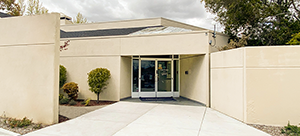Right Time
Aging is a little art and a little science. Each person ages differently and may face varying health challenges as the years go by. Navigating lifestyle decisions later in life isn’t always a straightforward proposition. Those decisions start with thinking about what quality of life is for you – and how “place” can either enable that life or be a barrier. If where you live is viewed as a platform for that quality of life, then one of those decisions may be deciding when is the right time to move into an assisted living community and when to begin making plans for such a transition.

Signs that it is the Right Time for Assisted Living
Growing older can bring many gifts, like wisdom, freedom, and time. But it can also be challenging when the things we enjoy become harder to do and our health is impacted. As a result, some people strongly resist the notion of moving to an assisted living community, even though it might be the very best thing for everyone involved. It’s a complex situation and a decision that many people need some time to figure out.
Some clear signals indicate it may be time to move from an independent living situation into an assisted living community, including:

Depression or social isolation: perhaps because of transportation or other mobility issues, it may be hard to stay connected to key social groups and continue hobbies.

Worsening of medical conditions, an increased number of falls, and overall increased frailty, making it hard to engage in key life enriching activities.

Difficulty managing domestic finances or the upkeep of the home, adding unnecessary stress.

Difficulty keeping the house clean and a decline in ability to care for oneself.
Suppose someone has recently lost a spouse or partner who took care of most of the housework, meals, and shopping. In that case, the surviving individual may struggle to cook or clean adequately, while also grieving and experiencing loneliness after such a loss and perhaps navigating changed dynamics within their social circle.
A person may develop multiple medical problems in succession. As these chronic conditions progress, they often need more help day-to-day and find managing their home overwhelming. This can also lead to social isolation and the inability to pursue beloved hobbies and interests.
Another common situation is when a partner or spouse begins to exhibit signs of memory loss, which may be a symptom of Alzheimer’s disease or dementia. Caregiver burnout is an issue among those who care for people with cognitive impairment. Assisted living may help both spouses or partners enjoy a better quality of life as they receive care and support.
Making the Transition to Assisted Living
Moving can be hard. There are a lot of emotions that can surface. Changing routines, uprooting an entire life can feel completely overwhelming. If the loss of a spouse or partner precipitates, the need to move into an assisted living community then grief added to all the mixed emotions of leaving the family home for an unfamiliar place full of strangers.
There may be feelings of guilt on the part of the family members/caregivers who feel a move is necessary or if the placement is made last minute, in a rush, or in an emergency. Making important decisions under pressure or high emotion can create a panic situation. It typically prevents families from making an informed and thoroughly researched placement in the right community.
While we acknowledge all of the challenges that can come with a move, it is also an opportunity to talk about what is quality of life for the individual and how this move might enable that.
How to Initiate the Conversation about Assisted Living
Starting the conversation can be difficult, but approaching it a step at a time and conducting a series of discussions over weeks or months may help. Some families find that speaking with their loved one’s doctor, a financial advisor, an attorney, or a counselor can also be very beneficial in determining the right time to move. These professionals can provide insightful suggestions and be a source of information for how other families have handled similar situations.
Including family members can be challenging and rewarding, so think carefully about who should be involved in the process, not least of which is the older adults themselves. In some families, the adult children of older adults think they’re doing the best thing for an aging parent without considering what the parent wants, which can lead to resentment. Again, transparent and open communication can help alleviate these issues. The more conversations you have with all interested parties, the better.

Before you start the conversation:
- Write down your concerns and the points you want to get across to your loved one.
- Research options on what might be a good fit for your loved one, so you have some suggestions at the ready as the conversation evolves
Then, start talking. Some things to keep in mind about these conversations:
- You don’t have to do it all at once. You can make small inroads before sitting down for a big talk.
- Try to do as much of this sort of communication in person, so you can pick up on body language and other nonverbal clues about how your loved one is feeling.
- Be empathetic, and try to understand how difficult these conversations can be. Avoid pity.
- Start with a general discussion about what is quality of life for your loved one. What are the hobbies and interests they want to continue to explore? What organizations do they want to stay connected to?
- Ask what life is like at home for your loved one. Ask about safety issues or challenges they might have and if these can be easily remedied, such as installing extra handrails around the bathtub. Look into making these changes in the short term until a final decision about future care is determined.
- Ask if your loved one feels lonely. One of the most significant upsides to moving to assisted living is social stimulation. Community dining and access to life enrichment activities can help a person who has become socially isolated.
- Ask if your loved one wants help with housekeeping, laundry, running errands, or other daily chores. They might be struggling in silence, reluctant to ask for help.
- Listen. Listen to what your loved one is saying, and ask open-ended questions that allow them to bring up any issues they may be facing.
As difficult as it may be, begin having a conversation with loved ones about their plans earlier rather than later. Discuss finances, wishes, and legal arrangements that must be in place before certain health conditions such as dementia or Alzheimer’s disease become critical.
When It’s Time for Assisted Living
While there are a few definitive signs that an older adult is ready for assisted living, each situation is unique. Some choose assisted living in order to enable the life they want to live and to be in a community. For others, there may be things about their current living situation that drive the need for a change. These questions may help in determining whether continuing to live in a current situation is a viable option.

17 Questions to Ask If a Move is Necessary
- Is the senior eating healthy, balanced meals regularly?
- Is there fresh, nutritious food in their refrigerator and pantry that is not expired?
- Is the senior capable of getting around safely and independently? (Look for unexplained bruises or minor injuries that may indicate they have been falling or having accidents recently.)
- Are they wearing fresh, clean clothing each time you visit?
- Can they bathe themselves, groom adequately, and handle other personal care tasks like dental care?
- Are they laundering their clothing, towels, and linens regularly?
- When you look around their house or yard, is it as neat and clean as it used to be?
- Does the older adult remember to take their medications correctly, with the correct dosages, and at the right times? (Warning signs of mismanaging medications include hospitalizations, stockpiled or expired medications, and pillboxes that are not current.)
- Are their current health conditions regularly monitored and well-controlled? (Chronic medical conditions may worsen with age, and progressive conditions like Alzheimer’s disease and Parkinson’s disease are guaranteed to worsen. In addition, current and future health concerns should be factored into senior housing decisions since settings like assisted living do NOT provide skilled nursing care.)
- Are they able to operate household appliances safely?
- Do they remember to turn kitchen appliances off when they are finished cooking?
- Is their home equipped with safety features and modifications for aging in place, such as grab bars and a personal emergency alert system?
- Do they have a plan in place to summon help in case of an emergency?
- If the senior is still driving, are they doing so safely? (Red flags include increased accidents and new dents or scratches on their vehicle.) If they are no longer driving, do they have alternate means of transportation?
- Are they paying their bills on time and opening and disposing of mail on time? (Look for stacks of mail, unpaid bills, and past-due notices.)
- Do they have friends, family, or acquaintances they regularly interact with?
- Does the senior still engage in hobbies or activities that they enjoy?
Suppose the answer to most of these questions is “no,” or you notice some of the red flags listed above. In that case, it may be time to begin researching local assisted living communities.
Requesting a needs assessment will help clarify if your loved one is a good fit for assisted living or if a lower level of care (independent living) or higher level (nursing home care or memory care) may be appropriate.
Where to Begin
Contact Elder Care Alliance to get started or request more information.















